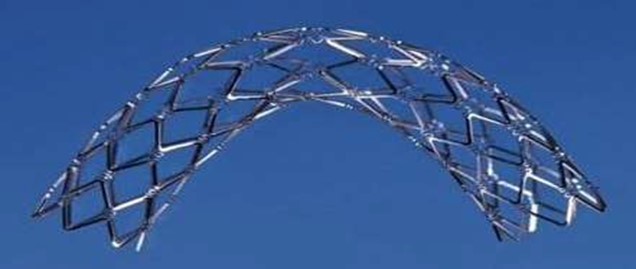PALMAZ MULLINS XD Pulmonary Stent – P220004
This is a brief overview of information related to FDA’s approval to market this product. See the links below to the Summary of Safety and Effectiveness Data (SSED) and product labeling for more complete information on this product, its indications for use, and the basis for FDA’s approval.
Product Name: PALMAZ MULLINS XD Pulmonary Stent
PMA Applicant: Cordis US Corp.
Address: 14201 N.W. 60th Avenue, Miami Lakes, Florida 33014
Approval Date: July 21, 2023
Approval Letter: Approval Order
What is it?
The PALMAZ MULLINS XD Pulmonary Stent is a stainless-steel mesh tube that can be placed inside a narrowed pulmonary artery (blood vessel in the lung) and expanded to widen it.
How does it work?
The stent is compressed and placed on a small, thin tube with a deflated balloon at the tip called a balloon catheter. It is then inserted through a person’s skin into a blood vessel in the groin. Together, the catheter and stent are guided to the inside of the narrowed location of the pulmonary artery. The balloon is then inflated to expand the stent against the pulmonary artery wall, which widens the narrowed part of the artery. The balloon is then deflated, and the catheter is removed from the body. The stent permanently stays in the body to hold the vessel open.
When is it used?
The PALMAZ MULLINS XD Pulmonary Stent is used to reopen a narrowed pulmonary artery in children who weigh at least 10 kg (22 lb.) and have two ventricles (pumping chambers) in their heart.
What will it accomplish?
The PALMAZ MULLINS XD Pulmonary Stent widens a narrowed pulmonary artery. In a clinical study of 108 patients, 103 patients (95.4%) had at least a 50% increase in pulmonary artery diameter after the stent was implanted and the stent placement decreased pressure in the pulmonary artery, reducing how hard the heart must work to move blood to the lungs.
When should it not be used?
The stent should not be used in people:
- Who have an active infection.
- Who have an aneurysm, dissection, or in-situ thrombus (blood clot) formation at the treatment site.
- In whom there is an inability to cross the narrowed vessel segment safely.
- Who have a vessel too small for the delivery system.

